 W
W1940—1946 in French Indochina focuses on events that happened in French Indochina during and after World War II and which influenced the eventual decision for military intervention by the United States in the Vietnam War. French Indochina in the 1940s was divided into five protectorates: Cambodia, Laos, Tonkin, Annam, and Cochinchina. The latter three made up Vietnam. In 1940, the French controlled 23 million Vietnamese with 12,000 French soldiers, about 40,000 Vietnamese soldiers, and the Sûreté, a powerful police force. At that time, the U.S. had little interest in Vietnam or French Indochina as a whole. Fewer than 100 Americans, mostly missionaries, lived in Vietnam and U.S. government representation consisted of one consul resident in Saigon.
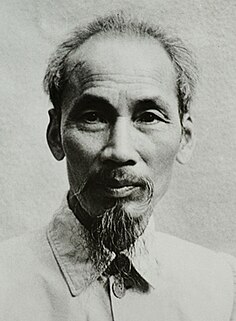 W
W1947–1950 in French Indochina focuses on events influencing the eventual decision for military intervention by the United States in the First Indochina War. In 1947, France still ruled Indochina as a colonial power, conceding little real political power to Vietnamese nationalists. French Indochina was divided into five protectorates: Cambodia, Laos, Tonkin, Annam, and Cochinchina. The latter three made up Vietnam.
 W
WWhen 1954 began, the French had been fighting the insurgent communist-dominated Viet Minh for more than seven years attempting to retain control of their colony Vietnam. Domestic support for the war by the population of France had declined. The United States was concerned and worried that a French military defeat in Vietnam would result in the spread of communism to all the countries of Southeast Asia—the domino theory—and was looking for means of aiding the French without committing American troops to the war.
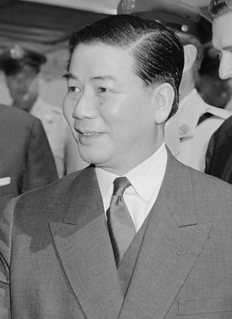 W
WIn 1955, the Prime Minister of South Vietnam Ngô Đình Diệm faced a severe challenge to his rule over South Vietnam from the Bình Xuyên criminal gang and the Cao Đài and Hòa Hảo religious sects. In the Battle of Saigon in April, Diệm's army eliminated the Bình Xuyên as a rival and soon also reduced the power of the sects. The United States, which had been wavering in its support of Diệm before the battle, strongly supported him afterwards. Diệm declined to enter into talks with North Vietnam concerning an election in 1956 to unify the country. Diệm called a national election in October and easily defeated Head of State Bảo Đại, thus becoming President of South Vietnam.
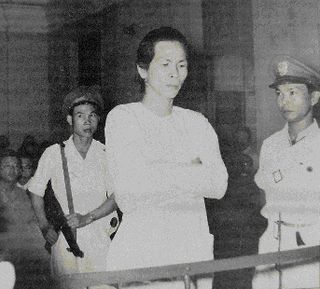 W
WNgo Dinh Diem consolidated his power as the President of South Vietnam. He declined to have a national election to unify the country as called for in the Geneva Accords. In North Vietnam Ho Chi Minh apologized for certain consequences of the land reform program he had initiated in 1955. The several thousand Viet Minh cadres the North had left behind in South Vietnam focused on political action rather than insurgency. The South Vietnamese army attempted to root out the Viet Minh.
 W
WIn 1957 South Vietnam's President Ngô Đình Diệm visited the United States and was acclaimed a "miracle man' who had saved one-half of Vietnam from communism. However, in the latter part of the year, violent incidents committed by anti-Diệm insurgents increased and doubts about the viability of Diệm's government were expressed in the media and by U.S. government officials.
 W
WIn 1958, the upswing in violence against the government of South Vietnam continued, much of which was committed by the communist-dominated insurgents now called the Viet Cong. In South Vietnam, President Ngo Dinh Diem appeared to be firmly in power, although many American officials expressed concern about the repressive nature of his regime. The United States continued to finance most of the budget of the government of South Vietnam. North Vietnam continued to campaign for reunification with the South while focusing on its internal economic development, but pressure from hard-pressed communists in the South was forcing the North to contemplate a more active military role in overthrowing the Diem government.
 W
W1959 saw Vietnam still divided into South and North. North Vietnam authorized the Viet Cong (VC)to undertake limited military action as well as political action to subvert the Diệm government. North Vietnam also authorized the construction of what would become known as the Ho Chi Minh Trail to supply the VC in South Vietnam. Armed encounters between the VC and the government of South Vietnam became more frequent and with larger numbers involved. In September, 360 soldiers of the Army of the Republic of Vietnam (ARVN) were ambushed by a force of about 100 VC guerrillas.
 W
WIn 1960, the oft-expressed optimism of the United States and the Government of South Vietnam that the Viet Cong (VC) were nearly defeated proved mistaken. Instead the VC became a growing threat and security forces attempted to cope with VC attacks, assassinations of local officials, and efforts to control villages and rural areas. Throughout the year, the U.S. struggled with the reality that much of the training it had provided to the Army of the Republic of Vietnam (ARVN) during the previous five years had not been relevant to combating an insurgency. The U.S. changed its policy to allow the Military Assistance Advisory Group (MAAG) to begin providing anti-guerrilla training to ARVN and the paramilitary Civil Guard.
 W
WThe year 1961 saw a new American president, John F. Kennedy, attempt to cope with a deteriorating military and political situation in South Vietnam. The Viet Cong (VC) with assistance from North Vietnam made substantial gains in controlling much of the rural population of South Vietnam. Kennedy expanded military aid to the government of President Ngô Đình Diệm, increased the number of U.S. military advisors in South Vietnam, and reduced the pressure that had been exerted on Diệm during the Eisenhower Administration to reform his government and broaden his political base.
 W
WThe Viet Cong (VC) insurgency expanded in South Vietnam in 1962. U.S. military personnel flew combat missions and accompanied South Vietnamese soldiers in ground operations to find and defeat the insurgents. Secrecy was the official U.S. policy concerning the extent of U.S. military involvement in South Vietnam. The commander of Military Assistance Command, Vietnam (MACV), General Paul D. Harkins, projected optimism that progress was being made in the war, but that optimism was refuted by the concerns expressed by a large number of more junior officers and civilians. Several prominent magazines, newspapers and politicians in the U.S. questioned the military strategy the U.S. was pursuing in support of the South Vietnamese government of President Ngô Đình Diệm. Diệm created the Strategic Hamlet Program as his top priority to defeat the VC. The program intended to cluster South Vietnam's rural dwellers into defended villages where they would be provided with government social services.
 W
WThe defeat of the South Vietnamese Army of the Republic of Vietnam (ARVN) in a battle in January set off a furious debate in the United States on the progress being made in the war against the Viet Cong (VC) in South Vietnam. Assessments of the war flowing into the higher levels of the U.S. government in Washington, D.C. were wildly inconsistent, some citing an early victory over the VC, others a rapidly deteriorating military situation. Some senior U.S. military officers and White House officials were optimistic; civilians of the Department of State and the Central Intelligence Agency (CIA), junior military officers, and the media were decidedly less so. Near the end of the year, U.S. leaders became more pessimistic about progress in the war.
 W
WSouth Vietnam was in political chaos during much of the year, as generals competed for power and Buddhists protested against the government. The Viet Cong (VC) communist guerrillas expanded their operations and defeated the South Vietnamese Army of the Republic of Vietnam (ARVN) in many battles. North Vietnam made a definitive judgement in January to assist the VC insurgency with men and material. In November, North Vietnam ordered the People's Army of Vietnam (PAVN) to infiltrate units into South Vietnam and undertake joint military operations with the VC.
 W
WIn 1965, the United States rapidly increased its military forces in South Vietnam, prompted by the realization that the South Vietnamese government was losing the Vietnam War as the communist-dominated Viet Cong (VC) gained influence over much of the population in rural areas of the country. North Vietnam also rapidly increased its infiltration of men and supplies to combat South Vietnam and the U.S.. The objective of the U.S. and South Vietnam was to prevent a communist take-over. North Vietnam and the VC sought to unite the two sections of the country.
 W
WAt the beginning of 1966, the number of U.S. military personnel in South Vietnam totaled 184,314. South Vietnamese military forces totaled 514,000 including the army (ARVN) and the Regional Force and Popular Force militias. The North Vietnamese People's Army of Vietnam (PAVN) numbered 400,000, most still in North Vietnam. 50,000 PAVN cadre and soldiers infiltrated South Vietnam during 1965. Group 559, charged with transporting supplies down the Ho Chi Minh Trail to supply PAVN troops in both South Vietnam and Laos, numbered 24,400 personnel. The U.S. estimated the number of Viet Cong (VC) and PAVN soldiers in South Vietnam at nearly 280,000 by June 1966, including part-time guerrillas. A pause in the bombing of North Vietnam by U.S. warplanes had been announced by President Johnson on 24 December and remained in effect.
 W
WAt the beginning of 1967 the United States was engaged in a steadily expanding air and ground war in Southeast Asia. Since its inception in February 1965, Operation Rolling Thunder, the bombing campaign against North Vietnam, had escalated in the number and significance of its targets, inflicting major damage on transportation networks industry, and petroleum refining and storage facilities. Yet the campaign showed no signs of achieving either of its stated objectives. The air attacks had not broken the Hanoi government’s will to continue the war, and they had not halted or appreciably hindered the flow of People's Army of Vietnam (PAVN) troops and supplies into South Vietnam. North Vietnam had been able to repair damage and develop substitutes for destroyed facilities rapidly enough to counter the incremental escalation of the U.S. air campaign. With Soviet and Chinese assistance, the North Vietnamese had built a large and sophisticated air defense system. Its guns and missiles extracted a toll in pilots and aircraft for every American raid. On the ground in South Vietnam, the U.S. force buildup, begun in late 1965, was approaching completion. More than 380,000 American troops were in the country, alongside over 730,000 Army of the Republic of Vietnam (ARVN) soldiers and some 52,000 soldiers from other allied nations. After a year of base building and intensifying combat, the U.S. commander, General William Westmoreland, believed that his forces were ready for major offensives that would seize the battlefield initiative from the PAVN and Viet Cong (VC). The PAVN/VC, however, had been conducting their own buildup, including the infiltration into South Vietnam of regular PAVN divisions. These units, along with VC guerrillas and light infantry formations, were countering the American challenge. Within South Vietnam, the PAVN/VC sought opportunities to inflict American casualties in large and small engagements. They also concentrated troops at various points on South Vietnam’s borders to create a strategic threat to the allies and compel the Military Assistance Command, Vietnam, (MACV) to disperse its reserves.
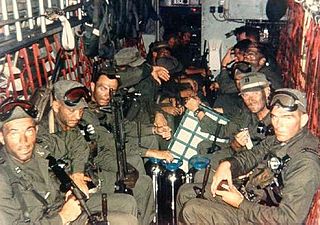 W
W W
W W
W1972 in the Vietnam War saw foreign involvement in South Vietnam slowly declining. Two allies, New Zealand and Thailand, which had each contributed military contingents, left South Vietnam this year. The United States continued to participate in combat, primarily with air power to assist the South Vietnamese army, while negotiators in Paris tried to hammer out a peace agreement and withdrawal strategy for the United States.
 W
W1975 marked the end of the Vietnam War, sometimes called the Second Indochina War or the American War. The North Vietnamese People's Army of Vietnam (PAVN) launched the Spring Offensive in March; the South Vietnamese Army of the Republic of Vietnam (ARVN) was quickly defeated. The North Vietnamese captured Saigon on April 30, accepting the surrender of South Vietnam. In the final days of the war, the United States, which had supported South Vietnam for many years, carried out an emergency evacuation of its civilian and military personnel and more than 130,000 Vietnamese.
 W
WThe following is a timeline of the history of the area which today comprises the U.S. state of Arizona. Situated in the desert southwest, for millennia the area was home to a series of Pre-Columbian peoples. By 1 AD, the dominant groups in the area were the Hohokam, the Mogollon, and the Ancestral Puebloans. The Hohokam dominated the center of the area which is now Arizona, the Mogollon the southeast, and the Puebloans the north and northeast. As these cultures disappeared between 1000 and 1400 AD, other Indian groups settled in Arizona. These tribes included the Navajo, Apache, Southern Paiute, Hopi, Yavapai, Akimel O'odham, and the Tohono O'odham.
 W
WThe California Republic, or Bear Flag Republic, was an unrecognized breakaway state from Mexico, that for 25 days in 1846 militarily controlled an area north of San Francisco, in and around what is now Sonoma County in California.
 W
WCivil rights movements are a worldwide series of political movements for equality before the law, that peaked in the 1960s. In many situations they have been characterized by nonviolent protests, or have taken the form of campaigns of civil resistance aimed at achieving change through nonviolent forms of resistance. In some situations, they have been accompanied, or followed, by civil unrest and armed rebellion. The process has been long and tenuous in many countries, and many of these movements did not, or have yet to, fully achieve their goals, although the efforts of these movements have led to improvements in the legal rights of some previously oppressed groups of people, in some places.
 W
WThis timeline of events leading to the American Civil War is a chronologically ordered list of events and issues which historians recognize as origins and causes of the American Civil War. These events are roughly divided into two periods: the first encompasses the gradual build-up over many decades of the numerous social, economic, and political issues that ultimately contributed to the war's outbreak, and the second encompasses the five-month span following the election of Abraham Lincoln as President of the United States in 1860 and culminating in the capture of Fort Sumter in April 1861.
 W
WThis timeline of modern American conservatism lists important events, developments and occurrences which have significantly affected conservatism in the United States. With the decline of the conservative wing of the Democratic Party after 1960, the movement is most closely associated with the Republican Party (GOP). Economic conservatives favor less government regulation, lower taxes and weaker labor unions while social conservatives focus on moral issues and neoconservatives focus on democracy worldwide. Conservatives generally distrust the United Nations and Europe and apart from the libertarian wing favor a strong military and give enthusiastic support to Israel.
 W
WThe drafting of the Constitution of the United States began on May 25, 1787, when the Constitutional Convention met for the first time with a quorum at the Pennsylvania State House in Philadelphia, Pennsylvania to revise the Articles of Confederation, and ended on September 17, 1787, the day the Constitution drafted by the convention's delegates to replace the Articles was adopted and signed. The ratification process for the Constitution began that day, and ended when the final state, Rhode Island, ratified it on May 29, 1790. In addition to key events during the Constitutional Convention and afterward while the Constitution was before the states for their ratification, this timeline includes important events that occurred during the run-up to the convention and during the nation's transition from government under the Articles of Confederation to government under the Constitution, and concludes with the unique ratification vote of Vermont, which at the time was a sovereign state outside the Union. The time span covered is 5 years, 9 months, from March 25, 1785 to January 10, 1791.
 W
WThe diplomatic history of the United States oscillated among three positions: isolation from diplomatic entanglements of other nations ; alliances with European and other military partners; and unilateralism, or operating on its own sovereign policy decisions. The US always was large in terms of area, but its population was small, only 4 million in 1790. Population growth was rapid, reaching 7.2 million in 1810, 32 million in 1860, 76 million in 1900, 132 million in 1940, and 316 million in 2013. Economic growth in terms of overall GDP was even faster. However, the nation's military strength was quite limited in peacetime before 1940.
 W
WTimeline of United States discoveries encompasses the breakthroughs of human thought and knowledge of new scientific findings, phenomena, places, things, and what was previously unknown to exist. From a historical stand point, the timeline below of United States discoveries dates from the 18th century to the current 21st century, which have been achieved by discoverers who are either native-born or naturalized citizens of the United States.
 W
WTimeline of Fauquier County, Virginia in the Civil War
 W
WThe United States provided many inventions in the time from the Colonial Period to the Gilded Age, which were achieved by inventors who were either native-born or naturalized citizens of the United States. Copyright protection secures a person's right to his or her first-to-invent claim of the original invention in question, highlighted in Article I, Section 8, Clause 8 of the United States Constitution, which gives the following enumerated power to the United States Congress:To promote the Progress of Science and useful Arts, by securing for limited Times to Authors and Inventors the exclusive Right to their respective Writings and Discoveries.
 W
WA timeline of United States inventions (1890–1945) encompasses the ingenuity and innovative advancements of the United States within a historical context, dating from the Progressive Era to the end of World War II, which have been achieved by inventors who are either native-born or naturalized citizens of the United States. Copyright protection secures a person's right to his or her first-to-invent claim of the original invention in question, highlighted in Article I, Section 8, Clause 8 of the United States Constitution which gives the following enumerated power to the United States Congress:To promote the Progress of Science and useful Arts, by securing for limited Times to Authors and Inventors the exclusive Right to their respective Writings and Discoveries.
 W
WA timeline of United States inventions (1946–1991) encompasses the ingenuity and innovative advancements of the United States within a historical context, dating from the era of the Cold War, which have been achieved by inventors who are either native-born or naturalized citizens of the United States. Copyright protection secures a person's right to his or her first-to-invent claim of the original invention in question, highlighted in Article I, Section 8, Clause 8 of the United States Constitution which gives the following enumerated power to the United States Congress:To promote the Progress of Science and useful Arts, by securing for limited Times to Authors and Inventors the exclusive Right to their respective Writings and Discoveries.
 W
WA timeline of United States inventions encompasses the ingenuity and innovative advancements of the United States within a historical context, dating from the Contemporary era to the present day, which have been achieved by inventors who are either native-born or naturalized citizens of the United States. Patent protection secures a person's right to his or her first-to-invent claim of the original invention in question, highlighted in Article I, Section 8, Clause 8 of the United States Constitution which gives the following enumerated power to the United States Congress: To promote the Progress of Science and useful Arts, by securing for limited Times to Authors and Inventors the exclusive Right to their respective Writings and Discoveries.
 W
WThis article contains a historical timeline of the events of Hurricane Katrina on August 23–30, 2005 and its aftermath.
 W
WThis article considers the detailed timeline of events before, during, and after the assassination of John F. Kennedy, the 35th President of the United States.
 W
WThis is the timeline of the Lewis and Clark Expedition through the American West, 1803-1806.
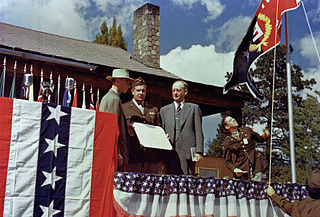 W
WThe Manhattan Project was a research and development project that produced the first atomic bombs during World War II. It was led by the United States with the support of the United Kingdom and Canada. From 1942 to 1946, the project was under the direction of Major General Leslie Groves of the US Army Corps of Engineers. The Army component of the project was designated the Manhattan District; "Manhattan" gradually became the codename for the entire project. Along the way, the project absorbed its earlier British counterpart, Tube Alloys. The Manhattan Project began modestly in 1939, but grew to employ more than 130,000 people and cost nearly US$2 billion. Over 90% of the cost was for building factories and producing the fissionable materials, with less than 10% for development and production of the weapons.
 W
WTimeline of Pinellas County, Florida history.
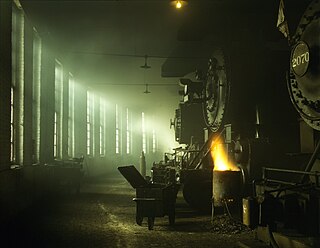 W
WThe Timeline of U.S.A Railway History depends upon the definition of a railway, as follows: A means of conveyance of passengers and goods on wheeled vehicles running on rails, also known as tracks.
 W
WThis is a timeline of the San Francisco Bay Area in California, events in the nine counties that border on the San Francisco Bay, and the bay itself.An identical list of events, formatted differently, may be found here
 W
WThis is a timeline of first achievements in spaceflight from the first intercontinental ballistic missile through the first multinational human-crewed mission—spanning the era of the Space Race. On July 31, 1956, the United States announced its intention to launch an artificial satellite during the International Geophysical Year. Two days later the Soviet Union announced its intention to do the same. The Soviet Union launched Sputnik 1 on October 4, 1957, beating the United States and stunning people all over the world. Both countries had various successes. The US landed astronauts on the Moon in 1969.
 W
WA state of the United States is one of the 50 constituent entities that shares its sovereignty with the federal government. Americans are citizens of both the federal republic and of the state in which they reside, due to the shared sovereignty between each state and the federal government. Kentucky, Massachusetts, Pennsylvania, and Virginia use the term commonwealth rather than state in their full official names.
 W
WThe Watergate scandal refers to the burglary and illegal wiretapping of the headquarters of the Democratic National Committee, in the Watergate complex, by members of President Richard Nixon's re-election campaign and the subsequent cover-up of the break-in resulting in Nixon's resignation on August 9, 1974, as well as other abuses of power by the Nixon White House that was discovered during the course of the scandal.
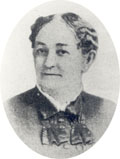 W
WThere is a long history of women in dentistry in the United States.
 W
WThis article lists events involving Women in warfare and the military in the United States since 2011. For the previous decade, see Timeline of women in warfare and the military in the United States, 2000–2010.
 W
WThis is a timeline of women rabbis in the United States.1890s: Ray Frank, a young Jewish woman living on the American frontier, began delivering sermons in her small Jewish community in the American West. Frank was regarded at the time as the "first woman rabbi". 1972: Sally Priesand became America's first female rabbi ordained by a rabbinical seminary, and the second formally ordained female rabbi in Jewish history, after Regina Jonas. 1974: Sandy Eisenberg Sasso became the first female rabbi in Reconstructionist Judaism. 1975: The Women's Rabbinic Network, an American national organization for female Reform rabbis, was founded in 1975 by female rabbinic students. 1976: Michal Mendelsohn became the first presiding female rabbi in a North American congregation when she was hired by Temple Beth El Shalom in San Jose, California. 1977: Sandy Eisenberg Sasso and her husband Dennis Sasso became the first couple to serve jointly as rabbis when they were hired by Beth-El Zedeck in Indianapolis. 1979: Linda Joy Holtzman became the first woman to serve as a rabbi for a Conservative congregation when she was hired by Beth Israel Congregation of Chester County, which was then located in Coatesville, Pennsylvania. She had graduated in 1979 from the Reconstructionist Rabbinical College in Philadelphia, yet was hired by Beth Israel despite their being a Conservative congregation. 1981: Helene Ferris became the first second-career female rabbi. 1981: Lynn Gottlieb became the first female rabbi in Jewish Renewal. 1981: Bonnie Koppell became the first female rabbi to serve in the U.S. military. She joined the army reserves in 1978 while a rabbinical student at the Reconstructionist Rabbinical College in Philadelphia, Pennsylvania, and was ordained in 1981. 1985: Amy Eilberg became the first female rabbi in Conservative Judaism. 1986: Amy Perlin became the first female rabbi in America to start her own congregation, Temple B'nai Shalom in Fairfax Station, which she was the founding rabbi of in 1986. 1986: Leslie Alexander became the first female rabbi of a major Conservative Jewish synagogue in the United States in 1986 at Adat Ari El synagogue in North Hollywood. 1986: Julie Schwartz became the first woman to serve as an active-duty Jewish chaplain in the U.S. Navy. 1987: Joy Levitt became the first female president of the Reconstructionist Rabbinical Association. 1988: Stacy Offner became the first openly lesbian rabbi hired by a mainstream Jewish congregation. 1992: Karen Soria became the first female rabbi to serve in the U.S. Marines, which she did from 1992 until 1996. 1993: Rebecca Dubowe became the first Deaf woman to be ordained as a rabbi in the United States. 1993: Chana Timoner became the first female rabbi to hold an active duty assignment as a chaplain in the U.S. Army. 1994: Laura Geller became the first woman to lead a major metropolitan congregation, specifically Temple Emanuel in Beverly Hills. 1994: Rabbi Shohama Wiener became the first woman to head a Jewish seminary, the Academy for Jewish Religion. 1995: Dianne Cohler-Esses became the first Syrian woman to become a rabbi, and the first Syrian non-Orthodox rabbi, when she was ordained by the Jewish Theological Seminary in 1995. 1996: Cynthia Culpeper became the first pulpit rabbi to announce being diagnosed with AIDS, which she did when she was rabbi of Agudath Israel in Montgomery, Alabama. 1999: Tamara Kolton became the very first rabbi of either sex in Humanistic Judaism. 2000: Helga Newmark, born in Germany, became the first female Holocaust survivor ordained as a rabbi. She was ordained in America. 2001: Angela Warnick Buchdahl, born in Korea, became the first Asian-American rabbi. She was ordained in America. 2002: Jacqueline Mates-Muchin was ordained by Hebrew Union College-Jewish Institute of Religion in New York, and thus became the first Chinese-American rabbi. 2002: Pamela Frydman became the first female president of OHALAH 2003: Janet Marder was named the first female president of the Reform Movement's Central Conference of American Rabbis (CCAR) on March 26, 2003, making her the first woman to lead a major rabbinical organization and the first woman to lead any major Jewish co-ed religious organization in the United States. 2003: Sarah Schechter became the first female rabbi to serve as a chaplain in the U.S. Air Force. 2006: Chaya Gusfield and Lori Klein became the first openly lesbian rabbis ordained by the Jewish Renewal movement. 2008: Julie Schonfeld was named the new executive vice president of the Conservative movement's Rabbinical Assembly, becoming the first female rabbi to serve in the chief executive position of an American rabbinical association. 2009: In June 2009, Avi Weiss ordained Sara Hurwitz with the title "maharat" rather than "Rabbi". In February 2010, Weiss announced that he was changing Maharat to a more familiar-sounding title "Rabba". Hurwitz continues to use the title Rabba and is considered by some to be the first female Orthodox rabbi. 2009: Alysa Stanton, born in Cleveland and ordained by a Reform Jewish seminary in Cincinnati, became the first African-American female rabbi. Later in 2009 she began work as a rabbi at Congregation Bayt Shalom, a small majority-white synagogue in Greenville, North Carolina, making her the first African-American rabbi to lead a majority-white congregation. 2011: Rachel Isaacs became the first openly lesbian rabbi ordained by the Conservative movement's Jewish Theological Seminary ("JTS"), which occurred in May 2011. 2012: Ilana Mills was ordained, thus making her, Jordana Chernow-Reader, and Mari Chernow the first three female siblings in America to become rabbis. 2012: Emily Aviva Kapor, who had been ordained privately by a "Conservadox" rabbi in 2005, began living as a woman in 2012, thus becoming the first openly transgender female rabbi. 2014: Rabbi Deborah Waxman was inaugurated as the president of the Reconstructionist Rabbinical College and Jewish Reconstructionist Communities on October 26, 2014. As the president of the Reconstructionist Rabbinical College, she is the first lesbian to lead a Jewish congregational union, and the first lesbian to lead a Jewish seminary; the Reconstructionist Rabbinical College is both a congregational union and a seminary. 2015: Mira Rivera became the first Filipino-American woman to be ordained as a rabbi. 2015: Lila Kagedan, born in Canada, became the first graduate of Yeshivat Maharat to use the title "Rabbi". 2015: Abby Stein came out as transgender and thus became the first woman to have been ordained by an ultra-Orthodox institution, having received her rabbinical degree in 2011 from Yeshiva Viznitz in South Fallsburg, N.Y. While this was before she was openly transgender, and she was not working as a rabbi when she came out, by 2020 she had re-embraced her title as rabbi, and was working in many capacities as a rabbi. 2016: After four years of deliberation, Hebrew Union College-Jewish Institute of Religion decided to give women a choice of wording on their ordination certificates beginning in 2016, including the option to have the same wording as men. Previously, male candidates' ordination certificates identified them by the Reform movement's traditional "morenu harav," or "our teacher the rabbi," while female candidates' certificates only used the term "rav u’morah," or "rabbi and teacher."
 W
WThe timeline of young peoples' rights in the United States, including children and youth rights, includes a variety of events ranging from youth activism to mass demonstrations. There is no "golden age" in the American children's rights movement.